A Beginner's Guide To Flyboarding
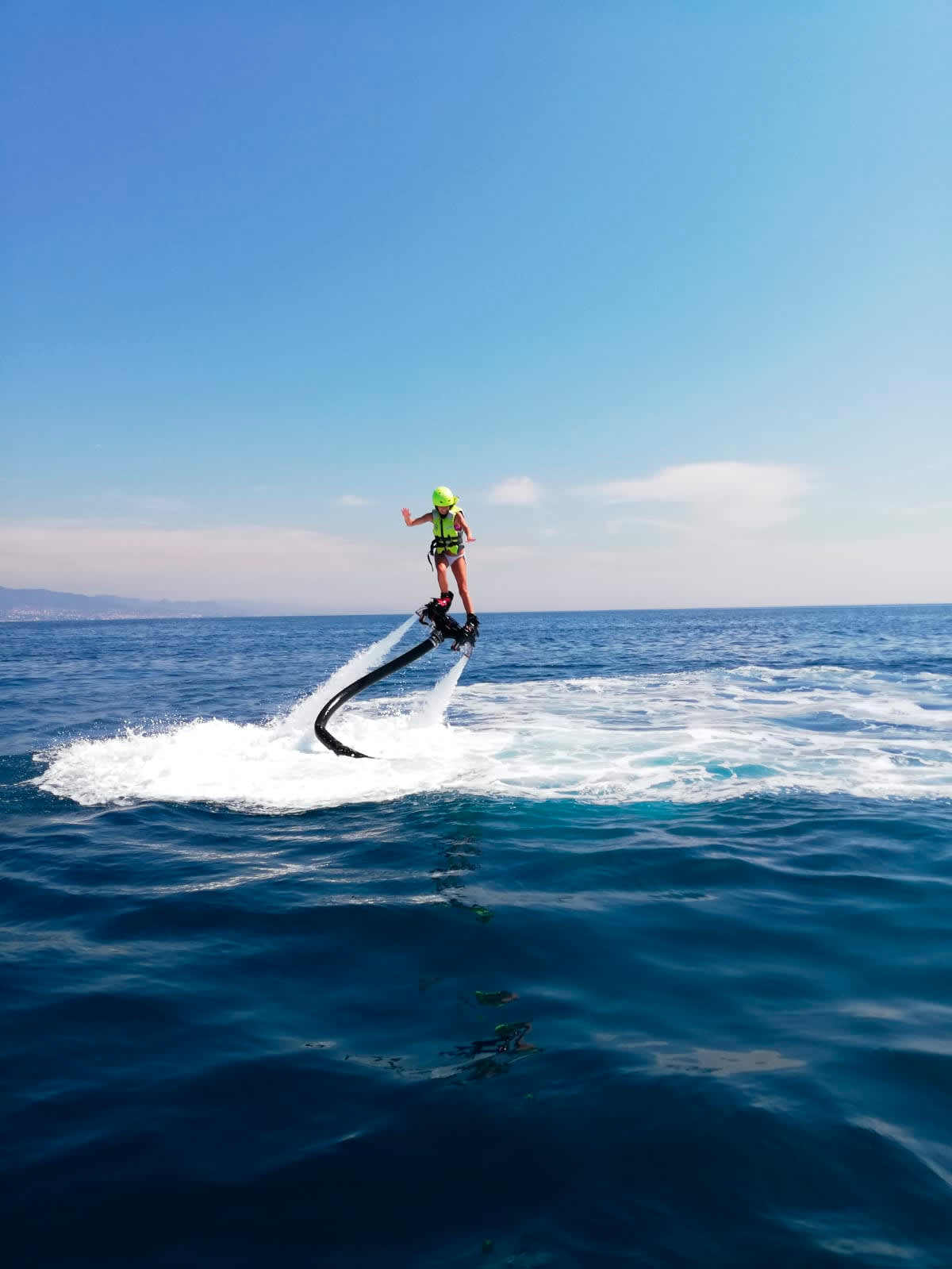
Flyboarding is an exciting sport combining jet skiing, wakeboarding, and snowboarding elements. It is a thrilling experience that allows riders to fly up to 45 feet in the air, perform flips and even dive into the water like a dolphin. In this article, we'll take a closer look at the history, different techniques, and types of flyboarding.
What is flyboarding?
Flyboarding is a water sport in which the participant stands on a board that is attached to a jet ski by a long hose. The jet ski provides the power to lift the participant into the air, where they can perform a variety of aerial maneuvers. Flyboarding is a relatively new sport, and it has become increasingly popular in recent years due to its thrilling, adrenaline-fueled experience.
To participate in flyboarding, you need a jet ski, a flyboard, and a trained operator. The operator controls the jet ski and monitors the safety of the flyboarding session. The flyboard is a platform attached to the jet ski by a hose. It is designed to provide the necessary traction and stability for the participant to stand and perform aerial maneuvers.
Flyboarding is an exciting and physically demanding sport that requires a good level of fitness and coordination. It is also a relatively safe activity, as the participant is always connected to the jet ski by the hose and is supervised by a trained operator. However, it is important to follow all safety guidelines and instructions to ensure a safe and enjoyable flyboarding experience.
What do you do during flyboarding?
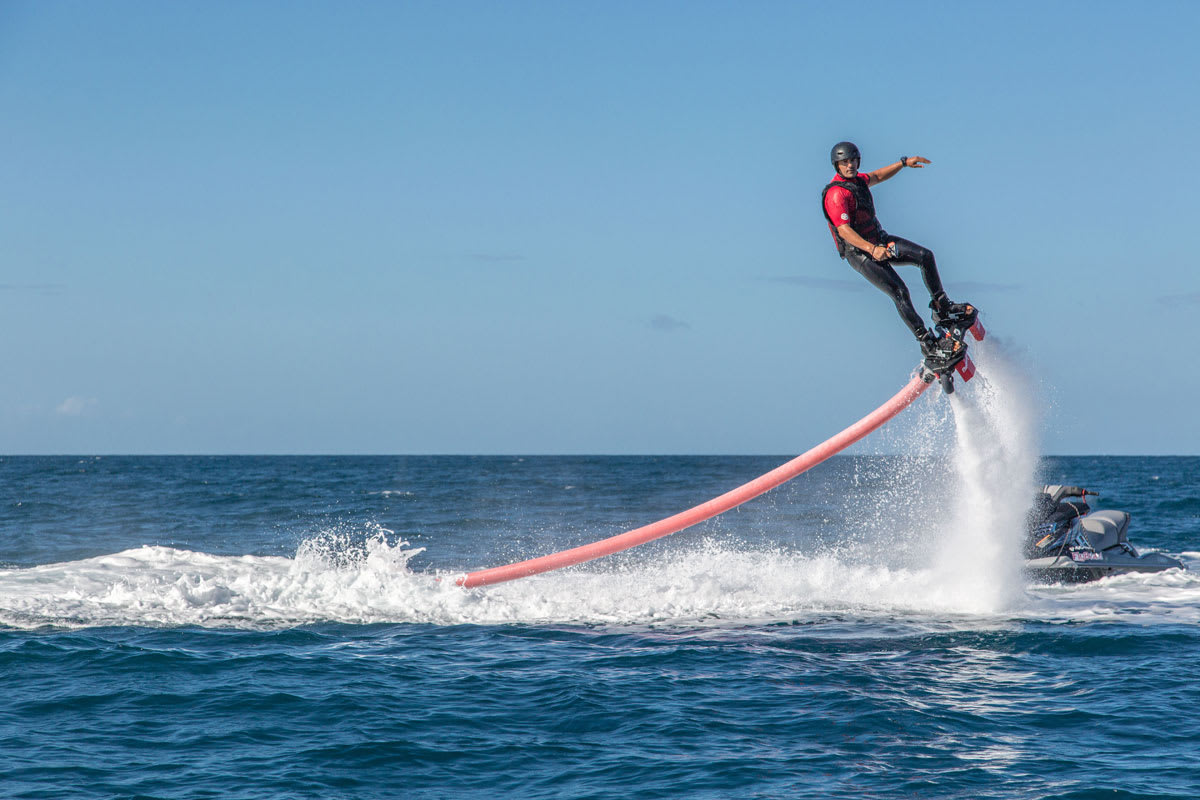
During flyboarding, you will use a jetpack-like device that is connected to a jet ski or other watercraft. The jetpack is attached to your feet, and it uses water pressure to propel you through the air and water. You will stand on a board that is attached to the jetpack, and you will use a handheld throttle to control the amount of water that is released. This will allow you to fly up into the air, dive down into the water, and perform a variety of stunts and tricks. You will also use a handheld nozzle to control your direction and stability while in the air.
What is the origin of flyboarding?
Flyboarding is a relatively new watersport. It was invented by a French jet ski champion named Franky Zapata in 2011. Zapata was inspired to create the flyboard after seeing a demonstration of a jetpack and realizing that the same principles could be applied to a watersport. He spent several years developing and refining the flyboard, and the first flyboarding competitions were held in 2013. Since then, flyboarding has become a popular activity for thrill seekers and water sports enthusiasts.
What are the different types of flyboarding?
There are several different types of flyboarding, each of which offers a unique experience and challenges for the participant. Some of the most common types of flyboarding include:
- Freestyle flyboarding: This is the most popular and versatile type of flyboarding, and it involves performing a variety of aerial maneuvers and tricks, such as flips, spins, and stunts. Freestyle flyboarding is a great way to test your physical abilities and show off your skills in the air.
- Race flyboarding: This type of flyboarding involves competing against other flyboarders in a timed race. It is a fast-paced and competitive sport that requires speed, endurance, and agility.
- Acrobatic flyboarding: This type of flyboarding involves performing complex, acrobatic maneuvers in the air, such as handstands, splits, and other gymnastic moves. It is a challenging and physically demanding form of flyboarding that requires a high level of skill and coordination.
- Proximity flyboarding: This type of flyboarding involves performing aerial maneuvers in close proximity to obstacles or other objects, such as buildings, bridges, or other flyboarders. It is a thrilling and exciting form of flyboarding that requires precision and control.
Overall, there are many different types of flyboarding to choose from, and the best type for you will depend on your personal interests, abilities, and goals. Whether you want to perform acrobatic feats in the air, compete against other flyboarders, or simply enjoy the thrill of flying, there is a type of flyboarding that is right for you.
What equipment is used for flyboarding?
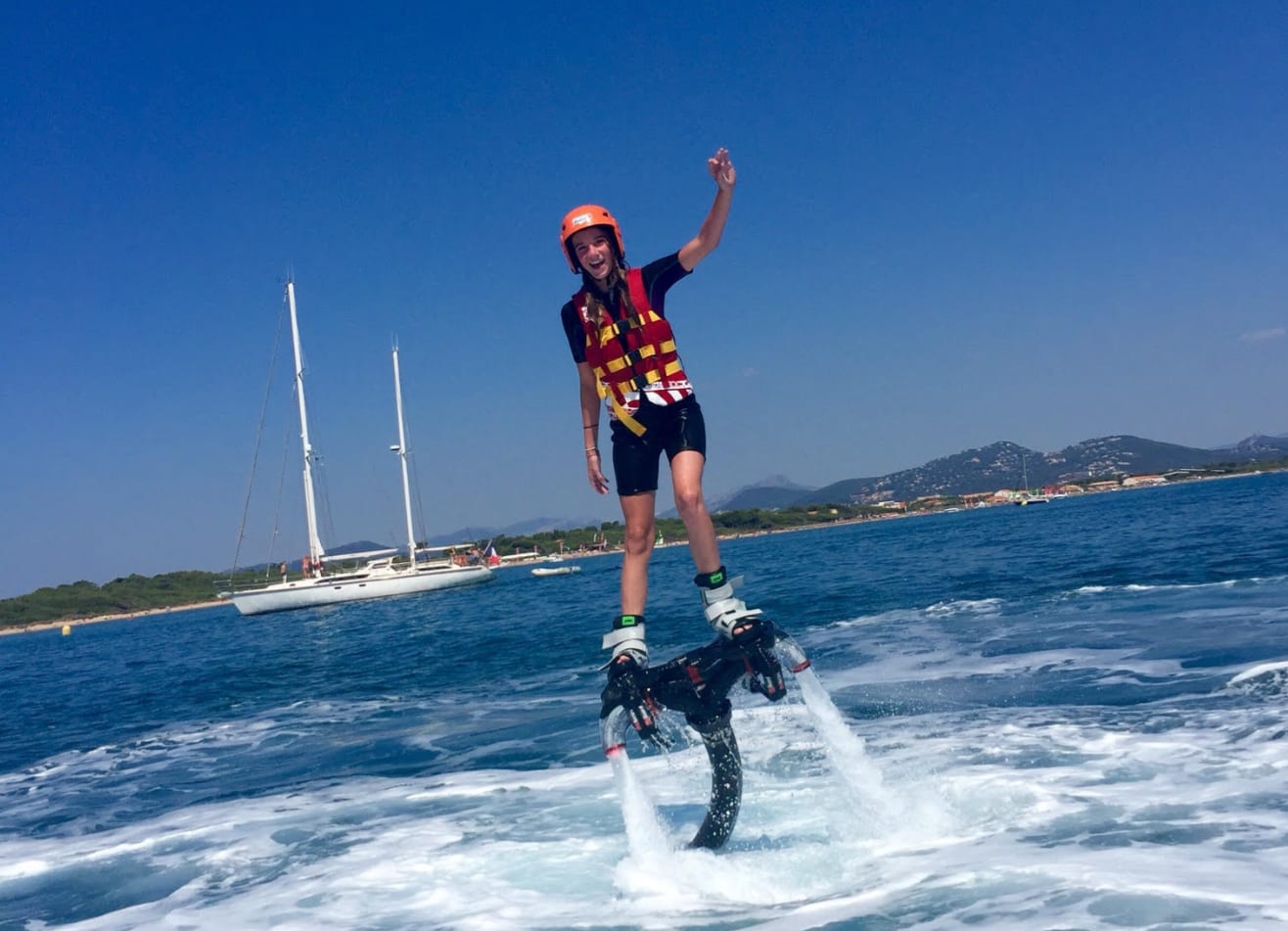
Flyboarding requires a few key pieces of equipment in order to work. The most important piece of equipment is the flyboard itself, which is a jetpack-like device that is attached to your feet. The flyboard is connected to a watercraft, such as a jet ski, by a long hose.
The watercraft provides the power for the flyboard, and it also allows you to control the water pressure and direction. In addition to the flyboard and watercraft, flyboarding also requires a life jacket and other personal protective equipment, such as a wetsuit and helmet.
You will also need a handheld throttle and nozzle to control the flyboard. Some flyboarding schools or companies may provide these items for you, but it is always a good idea to check before you book a flyboarding session.
How to practice flyboard?
If you are interested in learning how to flyboard, there are a few different options you can consider. One option is to take a flyboarding lesson from a qualified instructor. This can be a good way to learn the basics of flyboarding, including how to stand on the board, control your movements, and perform basic tricks. It can also be a good opportunity to learn about flyboarding safety and proper technique.
Another option is to join a local flyboarding club or group. Many cities and towns have flyboarding clubs that offer organized flyboarding sessions and events, and these can be a great way to learn from experienced flyboarders and gain access to equipment and resources.
Overall, the best way to learn flyboarding is to combine instruction from a qualified instructor with hands-on practice and experience. This will help you develop the skills and knowledge you need to become a safe and competent flyboarder.
Why should I try flyboarding?
There are many reasons why someone might want to try flyboarding. For starters, flyboarding is an exciting and thrilling experience that allows you to fly through the air and water like a superhero.
It can provide a sense of freedom and exhilaration that is hard to match. Flyboarding can also be a great way to challenge yourself and push your limits. It requires a combination of physical strength, coordination, and balance, which can be a rewarding experience.
Additionally, flyboarding can be a fun and unique way to enjoy the water and the outdoors. Whether you are an experienced water sports enthusiast or just looking for a new adventure, flyboarding can be a fun and exciting activity.
Who can take part in flyboarding?
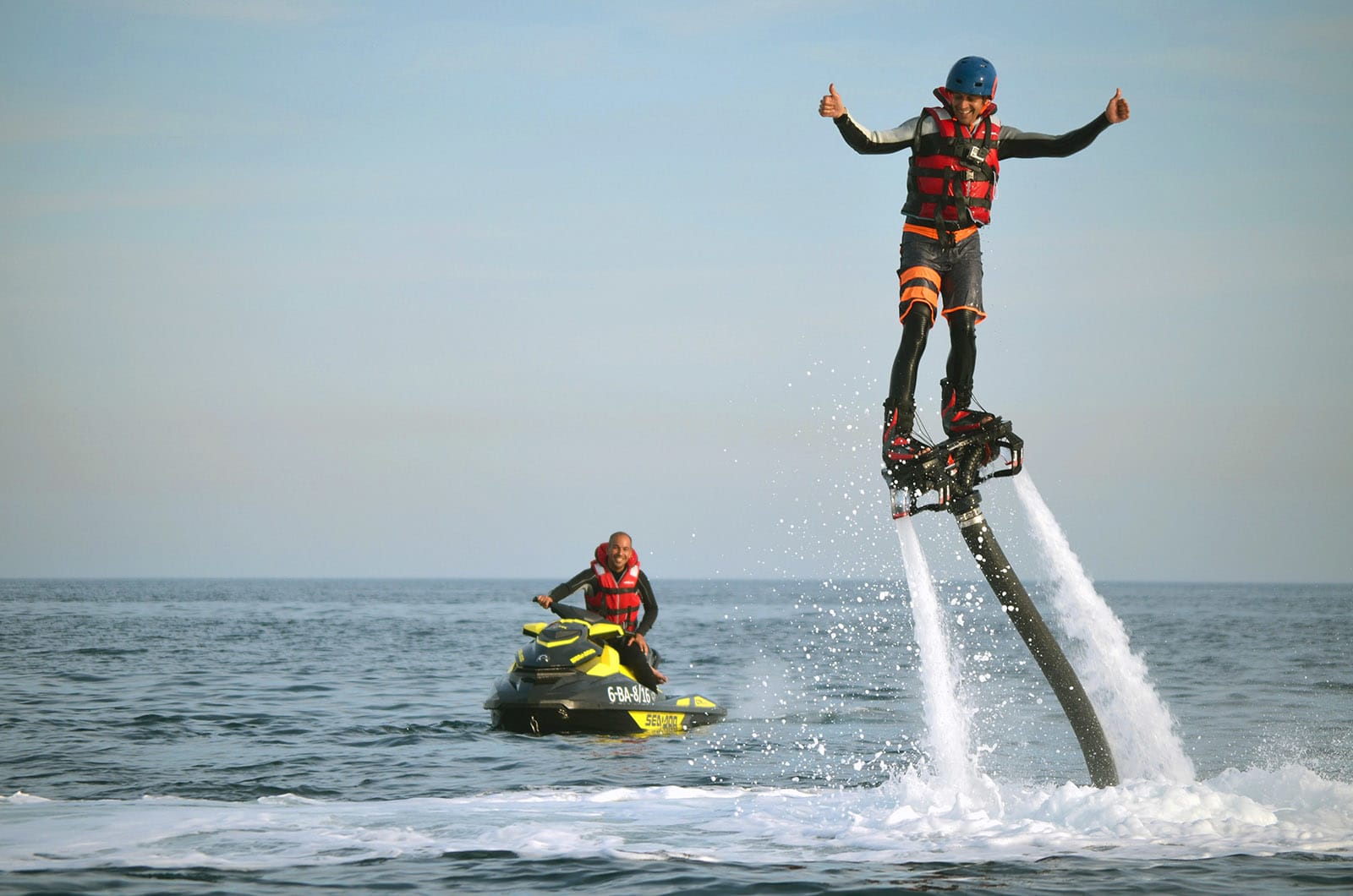
Anyone can participate in a flyboarding session as long as they are physically able to stand on the board and control their movements in the air. Flyboarding is a physically demanding activity that requires good balance, coordination, and endurance, so it is important to be in good physical shape before trying it.
In general, there are no specific age or weight restrictions for flyboarding, and people of all ages and sizes can participate in the sport. However, some flyboarding operators may have their own requirements or recommendations for participants, so it is always a good idea to check with the operator before starting a flyboarding session.
Overall, flyboarding is a fun and exciting activity that can be enjoyed by people of all ages and abilities. Whether you are a seasoned athlete or a first-time flyboarder, there is a flyboarding experience that is right for you.
What are the medical preconditions for flyboarding?
There are no specific medical preconditions for flyboarding. However, it is always a good idea to consult with your doctor before starting any new physical activity, especially if you have any existing health conditions or concerns.
It can be particularly challenging for people who are not used to exercising or who have medical conditions that affect their mobility or coordination. It is important to listen to your body and to stop if you feel any discomfort or pain while flyboarding. Additionally, it is important to follow the instructions of your flyboarding instructor and to take breaks as needed.
What are the risks associated with this watersport?
Like any outdoor activity, flyboarding carries some risks. Some of the potential risks associated with flyboarding include falling from a great height, colliding with objects in the water, and experiencing injuries from performing stunts or tricks.
Cold water and weather conditions can also be a risk, as they can lead to hypothermia or other health problems. In addition, flyboarding in remote or wilderness areas can present challenges in terms of safety and access to help in case of an emergency.
It is important to be aware of these risks and to take appropriate precautions, such as wearing a life jacket and following safety guidelines. By understanding and managing the risks associated with flyboarding, you can help ensure that your experience is safe and enjoyable.
When is the best time to flyboard?
The best time to go flyboarding can vary depending on a number of factors, including your location, the weather, and your personal preferences. In general, however, the warmer months of the year tend to be the best time for flyboarding, as the weather is usually more pleasant and the water is warmer.
In many parts of the world, the spring and summer months are considered the peak season for flyboarding. This is a great time to go flyboarding for leisure, as the conditions are often ideal for long, enjoyable sessions on the board.
If you are interested in flyboarding for adventure or sport, you may prefer to go flyboarding in the fall or early winter, when the weather is cooler and the water is rougher. This can be a great time to go flyboarding in more challenging environments, such as rivers, rapids, or the open ocean.
Ultimately, the best time to go flyboarding is when the conditions are most suitable for the type of flyboarding you want to do and when it is most convenient for you. Whether you are a beginner or an experienced flyboarder, there is no right or wrong time to go flyboarding - it is all about finding the right balance of weather, water, and personal preference.
What is the difference between flyboarding, hoverboarding, and jetpacking?

Flyboarding, hoverboarding, and jetpacking are all water-based activities that involve the use of propulsion systems to lift the participant off the water.
Flyboarding involves the use of a board that is connected to a watercraft (usually a jet ski) via a long hose. Water is forced through the hose and out of nozzles on the board, lifting the rider up into the air.
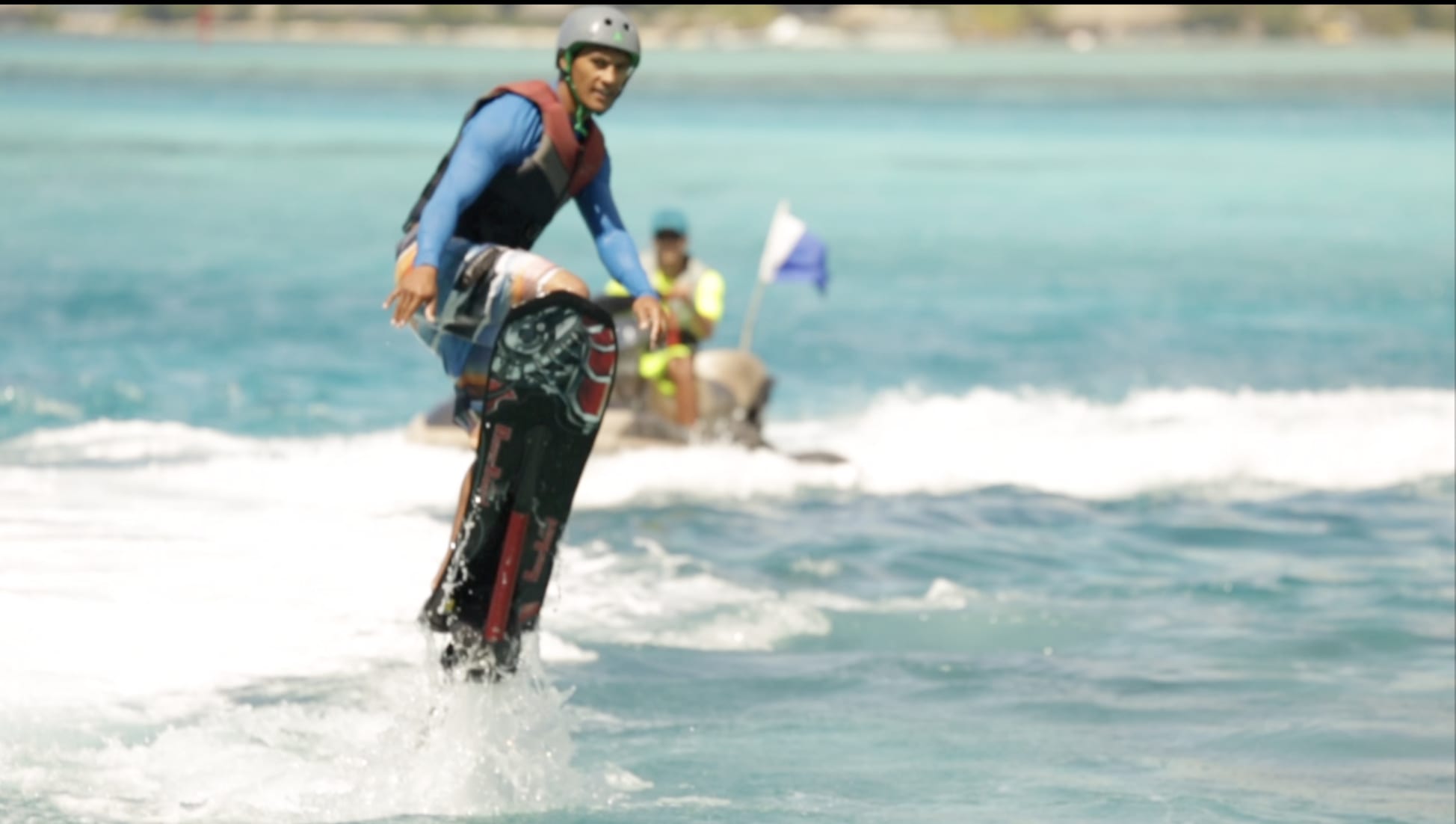
Hoverboarding, also known as eFoiling, is a water sport that involves riding on top of a hydrofoil board that is powered by an electric motor. The rider is lifted out of the water by the hydrofoils, giving the sensation of flying over the water.
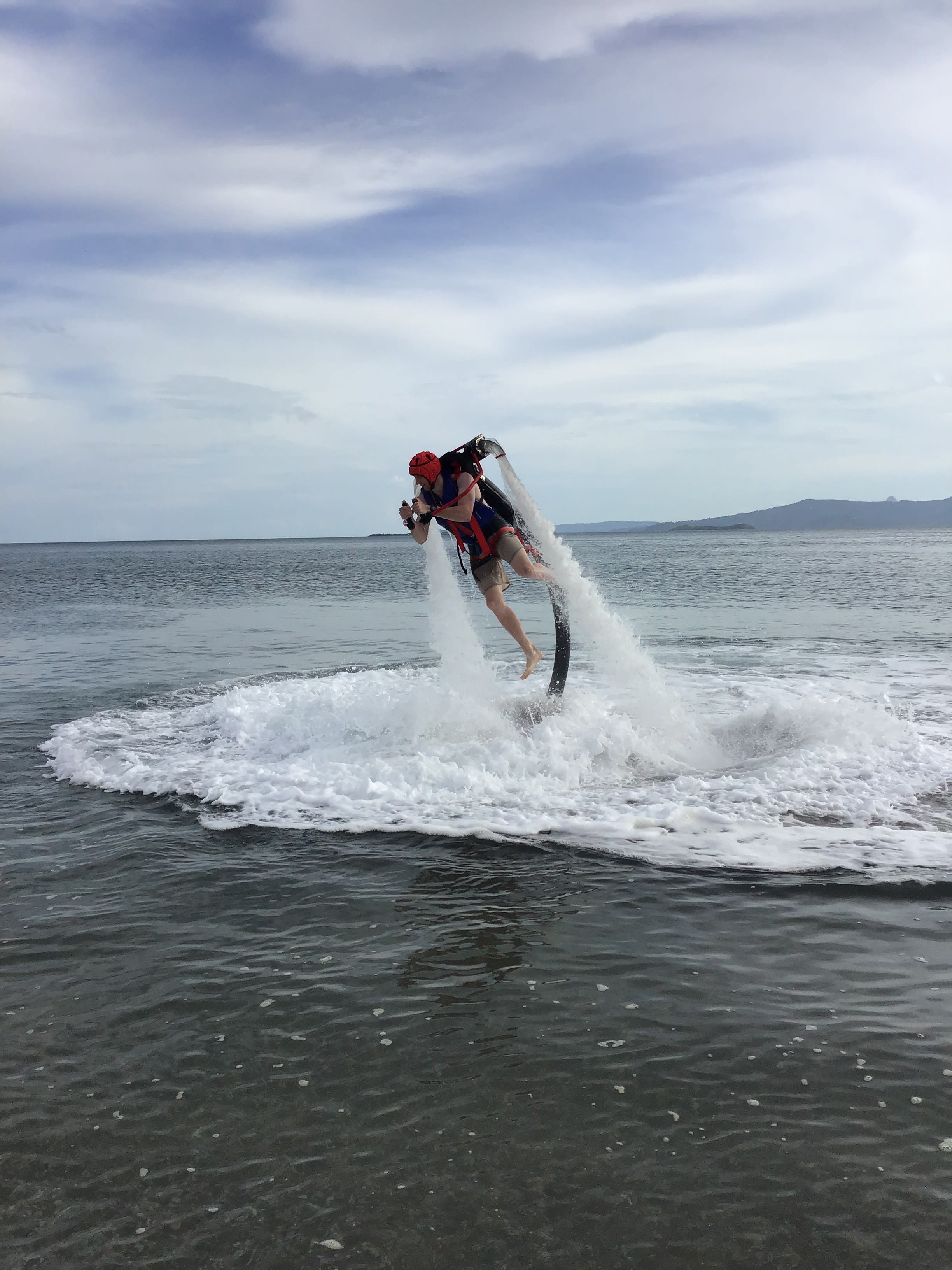
Jetpacking, also known as jetpack flying, is a water-powered activity that involves the use of a jetpack, which is worn by the rider, to propel them into the air. The jetpack is connected to a watercraft via a hose, which supplies water to the jetpack's engines.
In summary, Flyboarding uses a board that is connected to a watercraft via a hose, Hoverboarding uses a hydrofoil board powered by an electric motor and Jetpacking uses a jetpack worn by the rider that is connected to a watercraft via a hose.
Best spots to try flyboarding:
- Costa Blanca, Spain offers clear warm waters and a vibrant, energetic atmosphere.
- Santorini is the largest volcanic archipelago and the most popular island in Greece.
- The beautiful peninsula of Sainte-Anne in Martinique offers crystal-clear waters and beautiful, tropical surroundings.
- Lake Garda, Italy, offers picturesque, peaceful settings and the opportunity to flyboard among the stunning mountain scenery.
- The waterways of the Caribbean, are known for their warm, calm waters and beautiful, exotic surroundings.
There are many other great flyboarding spots around the world, including rivers, lakes, oceans, and other waterways. Ultimately, the best spots for flyboarding will depend on your personal interests and the type of flyboarding experience you are looking for. After choosing your spot, you can have a look at all our flyboarding activities.